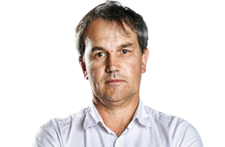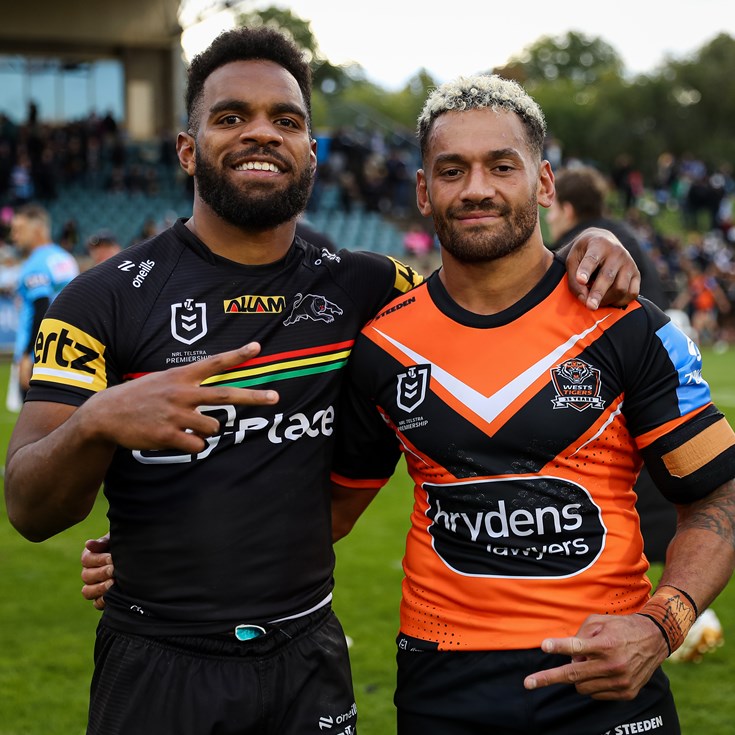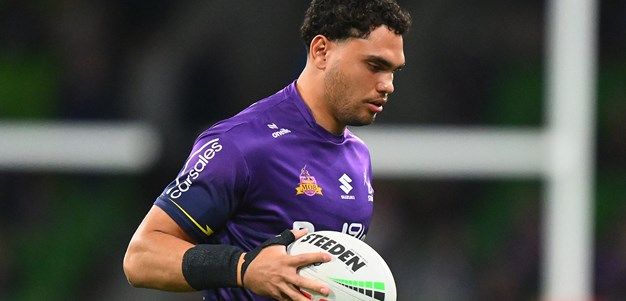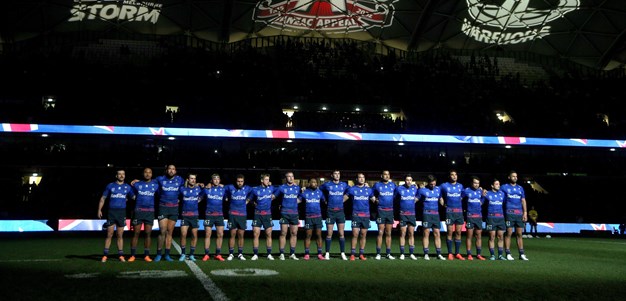“Unstoppable”!
That’s how South Sydney CEO Blake Solly describes the code one year after the NRL was shut down due to the global COVID-19 pandemic.
Warriors CEO Cameron George says the game had shown a “capability to move mountains” through the co-operation of the NRL, all 16 clubs and the players to ensure the Telstra Premiership was one the first major sporting competitions in the world to resume and complete the season.
On the anniversary of the most dramatic day in NRL history, most agree the game is now in a stronger position than it was before March 23, 2020.
The crisis forced the code to come together and focus on ensuring a strong NRL competition with financially viable clubs and a product that was attractive to fans, broadcasters and sponsors.
“The leadership of the NRL, and the NRL competition and the 16 clubs in it, worked together because that was the most important thing in the game and it became pretty clear that without an NRL competition there was no funding for grassroots and there was no funding for a big NRL organisation or other things," Solly said.
Every try from round 2
“It needed 16 clubs playing games every weekend and a really attractive competition. That was in need of reinforcement in the game, the focus needs to be on making the NRL as strong as it can be and making the clubs in it as strong as they can be."
George said: “There were all different factions that had different outcomes that they desire but at the end of the day the game had to come first and we all had to bite a bit off to fit in around the table and get the game back on the park. That was a powerful thing to be a part of.”
New rules – some of which are unlikely to have otherwise been considered, like the six-again call – were introduced to speed up the game and encourage attacking play, while the NRL returned to the one-referee model in place across the rest of the world.
“In hindsight, we ended up with a bit of luck but overall a great outcome,” ARLC commissioner and Project Apollo chair Wayne Pearce said.
COVID-19 also highlighted the value of the Warriors and the New Zealand market as the sacrifices of the club and its players, who relocated to Australia, were integral to the competition continuing.
“With what they did and are doing now, it is almost impossible to imagine a competition without them,” Solly said. “They have built so much credibility and respect.
“I think in the past some people only thought of New Zealand as a dot on a map but the Warriors are now looked at as a club with huge credibility, respect and integrity.”
Defy Impossible: Iconic moments
With the game not only surviving but thriving, it seems almost as difficult to comprehend now as it did at the time how much fear and uncertainty existed about the impact of COVID-19 on all aspects of life in Australia and around the world.
Nine News Sydney presenter Peter Overton, a former league reporter for the network, summed it up best with his introduction to the 6pm bulletin on March 23.
“Eighty-eight thousand people have lost their jobs, the NRL is suspending the 2020 season, the Olympics won’t go ahead this year, Queensland has closed its borders to us, 3000 Australians are stranded on cruise ships around the world and we can’t go to the pub for a drink,” Overton said.
“If I told you six weeks ago that this would happen you would think I was making it up. Well, all of these things happened in one day – today.”
Get Caught Up: Round 2
The code had endured the Super League war but whereas that divided clubs, players, fans and even families, the COVID-19 pandemic 25 years later united the game under the leadership of ARLC chair Peter V’landys.
As the CEO of Racing NSW, V’landys had dealt with the 2007 outbreak of equine flu that threatened to decimate the industry and he was able to convince the clubs and players that the game would survive and find a way to resume playing.
“When there is really strong leadership at the top of the game – and Peter, in particular, supplied that – and when the clubs, players and leadership work together the sport’s unstoppable,” Solly said.
“We were the first ones back on the field, we were the first ones back with crowds and when we all put our hearts and our minds together to achieve something the sport is unstoppable because everyone has so much enthusiasm and passion for it and everyone wants to see it succeed.
“Peter had been through something like this before and he understood the detail, he understood the importance of bio-security and not only did he understand it but he was very good at convincing us that there was a way out of it.”
The day the game shut down
The Women’s T20 Cricket World Cup final had been played at the MCG two weeks earlier before an 86,174 crowd but the second round of the NRL had been staged in empty stadiums and after two ARLC meetings on March 23, V’landys told a conference call that the competition was being suspended.
A press conference was held to announce the decision, with V'landys and then NRL CEO Todd Greenberg unable to say if or when the competition would resume.
Graham Annesley weekly football briefing - Round 2
The decision put an end to the constant speculation about whether the NRL could continue but it also bought home the stark reality for players and clubs of life without rugby league.
The NRL offices were closed until May 1 and staff ordered to take leave. Most clubs immediately stood down their staff, including coaches.
Solly addressed the Rabbitohs players and coaching staff in the dressing room at Redfern Oval.
“There was never at any question about ‘could this be the end’, everyone just turned their attention to ensuring the club survived and we got the competition back on,” he said.
NRL Round-Up - Round 2
“If there were no games and no money and no one knew what they were doing then the thing we had to do for the club was to stand everyone down and from a cash point of view know that if there was no money coming in we weren’t spending any.”
For George, the decision was a relief as the Warriors players had been stranded in Australia, while their families were in lockdown in New Zealand.
The players were able to return home and George was unsure if their season was finished.
“This was a global pandemic that was unfolding rapidly and people started to personally get very worried about what was going to happen, and no-one knew,” he recalled. “It was very scary and it was rapidly building on us.
“There was so much unknown and that many experts that you didn’t know who to believe but I felt with V’landys you knew, ‘right, this is what we are doing'.
“I didn’t know how long we were going to be shut for or if we were going to play for the rest of the year. I had no idea but it gave us a chance to regroup, get the right people around the table and come up with a strategy.”
Getting Project Apollo off the launch pad
Initially it was feared that the NRL may not resume until August or later but when V’landys declared May 28 as the re-start date it gave Pearce’s Project Apollo team a target to work towards.
Strict bio-security protocols had to be implemented to ensure players weren’t at risk of contracting COVID-19 by requiring them to enter a bubble with team-mates and coaching staff.
Defy Impossible: The buzzer beaters
The two-referee system was scrapped to cut costs and the six-again call introduced to combat concerns that wrestling in the ruck would not be policed as effectively if games were controlled by a single whistle-blower.
“It was a dire situation because we were looking down the barrel at a significant financial hurdle, in that broadcaster funds weren’t going to come in which meant clubs weren’t going to get the funding that was required,” Pearce said. “It was a situation which was an emergency.
“We were fortunate that we had the people in the game that were able to join together. We had a chairman in Peter V’landys who empowered Apollo members to make decisions and he was there as support and guiding the team.
My rugby league story: Cameron Murray
“What we’re seeing now is a game that’s been tweaked a bit and there were a lot of sacrifices made last year during Apollo that were made by the coaching staff, players and fans.
“But what it allowed us to do was to collaborate and innovate a few things in ways that wouldn’t have happened in business as usual.
“I think we’re seeing the benefits of that because the game is definitely a lot faster and, from what most people have said, is more attractive.”
How the Warriors story took flight
However, the most significant achievement was getting the Warriors back into Australia for the resumption of the competition on May 28.
The Warriors had planned to stay and train at a NSW Government-run sport and recreation facility near Lennox Head while undergoing their 14-day quarantine but after being told they could no longer use it George admitted he had finally considered the team may not play.
A last-ditch phone call to Tamworth MP Kevin Anderson, who George knew from his playing days, saved the day and the local airport received its first and only international flight on May 3.
“That was the lowest point,” George said. “It was only an 11pm phone call to Kevin Anderson that got me off the canvas.
Defy Impossible: The try savers
“We then had to create an international airport and because the game was working together I reckon that helped us achieve the government approval processes and flying into Tamworth.
“We turned a country airport into an international airport for one flight during a global pandemic and that to me came on the back of the game working together and working to achieve something.
“We could have easily packed up the kit bag and said it’s too hard but working 24-7, working with PVL and the executive team at the NRL, and all of my team, as well as the players and their families, and all the other clubs, we came out the other end.”
The views in this article do not necessarily express the opinions of the NRL, ARLC, NRL clubs or state associations.




